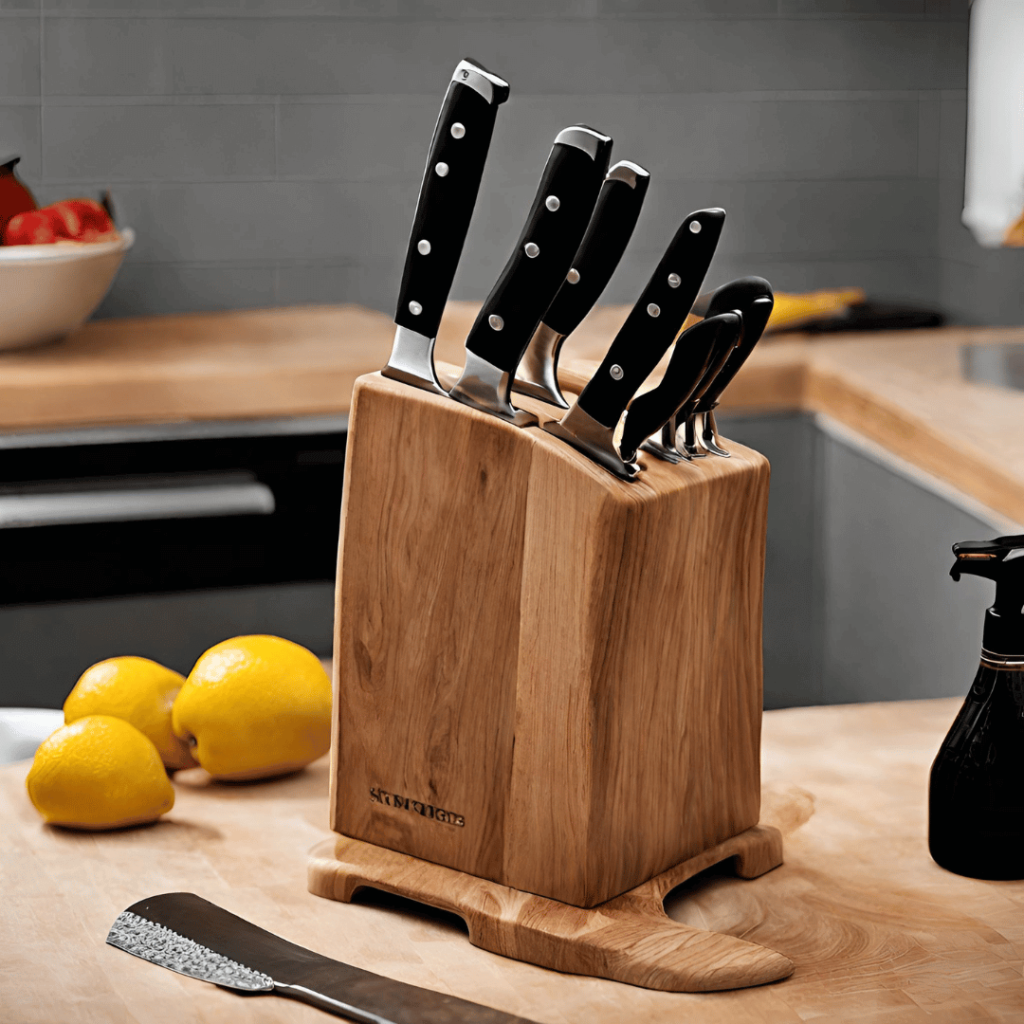Keeping your kitchen clean and safe is a top priority, and one often-overlooked aspect is the cleanliness of your wood knife block. Over time, these blocks can harbor bacteria and debris, affecting both your health and the condition of your knives. In this comprehensive guide, we’ll walk you through the process of cleaning your wood knife block step by step.

Table of Content
Why Cleaning Your Wood Knife Block is Essential
Before we dive into the cleaning process, let’s explore why regular wood knife block cleaning is so crucial:
Bacterial Prevention
A dirty knife block can become a breeding ground for harmful bacteria. Regular cleaning keeps your kitchen safe.
Prolonged Knife Lifespan
Clean knives maintain their sharpness and functionality for longer periods. A clean block safeguards your investment in quality knives.
Aesthetics and Kitchen Hygiene

A well-maintained kitchen, including clean utensil storage, enhances the aesthetics and overall hygiene of your cooking space.
Cleaning Your Wood Knife Block – Step by Step
Now, let’s get practical and guide you through the process of cleaning your wood knife block effectively:
Step 1: Empty the Knife Block
Start by carefully removing all the knives from the block. Place them aside to ensure they don’t obstruct your cleaning process.
Step 2: Shake Out Loose Debris
Turn the block upside down and give it a gentle shake to dislodge loose crumbs, dust, and debris. Dispose of these particles.
Step 3: Brush Out Remaining Debris
Use a small, clean brush (such as a toothbrush) to reach into the slots and dislodge any remaining debris. Be thorough in cleaning every nook and cranny.
Step 4: Wash the Block
Fill a basin with warm, soapy water. Immerse the wood knife block and use a cloth or brush to scrub the exterior and interior surfaces. Pay extra attention to the slot interiors.
Step 5: Rinse Thoroughly
After a thorough scrubbing, rinse the block with clean water to ensure there’s no soap residue left behind.
Step 6: Sanitize
For added cleanliness and safety, prepare a sanitizing solution by mixing equal parts of water and white vinegar. Wipe down the entire block and let it air dry completely.
Step 7: Reassemble Carefully
Once the block is dry, carefully reinsert your clean and dry knives, ensuring each knife is properly aligned in its designated slot.
Conclusion
Regularly cleaning your wood knife block is a small yet essential practice in maintaining a safe and hygienic kitchen. By following these steps, you not only prevent bacterial growth but also prolong the lifespan of your knives and contribute to a cleaner and more appealing kitchen environment.
A clean wood knife block not only safeguards your health but also enhances your culinary experience.
FAQ’S
Q1: How often should I clean my wood knife block?
A1: Cleaning every 1-2 months is advisable to maintain a hygienic kitchen.
Q2: Can I clean other types of knife blocks the same way?
A2: The process is generally applicable to other knife block materials but adapt for specific needs like avoiding excess moisture with wooden blocks.
Q3: Are there alternative sanitizing solutions I can use?
A3: Yes, you can use a mixture of hydrogen peroxide and water as an alternative sanitizing solution for your wood knife block.
Q4: Can I put my wood knife block in the dishwasher?
A4: It’s not recommended as the high heat and aggressive detergents can damage the wood.
